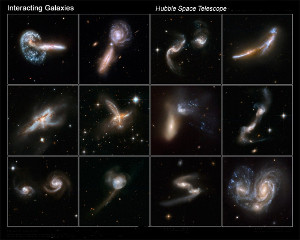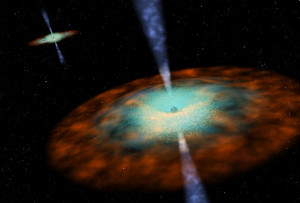
Fig. 1: Collection of HST images of interacting galaxies.
Credit: NASA, ESA, the Hubble Heritage (STScI/AURA)-ESA/Hubble Collaboration, and A. Evans (University of Virginia, Charlottesville/NRAO/Stony Brook University)

Fig. 2: Artist`s illustration of a binary black hole system.
Credit: NASA, Jet Propulsion Laboratory.
In the standard cosmological scenario of structure formation, galaxies assemble through successive mergers of larger and larger systems (see Fig. 1 for images of interacting galaxies). Apart from larger galaxies, this also leads to the formation of pairs of massive black holes, called black hole binaries (see Fig. 2 for an illustration), in their centres. Stars that undergo a close encounter with a black hole binary tend to extract energy and angular momentum from the binary, and are ejected to larger distances, while the orbital separation of the binary shrinks. If enough energy is transferred to the stellar population, the black holes come so close that eventually they merge in a burst of gravitational waves. Calculations of the evolution of black hole binaries generally assume spherically symmetric galaxy models. During mergers, however, strong perturbations are produced, which lead to significant deviations from spherical symmetry and to rotation.
So how do black hole binaries evolve in realistic merger remnants? To answer this question, scientists at the Max Planck Institute for Astrophysics and international collaborators performed a series of numerical simulations of galaxy mergers as well as black hole binaries immersed in rotating merger remnants. In these calculations, the gravitational forces between all pairs of particles in the galaxies are computed and very accurate trajectories are derived.
Simulating the merger of two galaxies using highly accurate numerical methods is an extremely challenging computational task, and required more than one year of uninterrupted computations on the GPU machines at the Max Planck Institute for Astrophysics and on the special purpose GRAPE cluster at the Rochester Institute of Technology (Rochester, USA). The results of these calculations, however, are very interesting.
See the website for more details: http://www.mpa-garching.mpg.de/mpa/research/current_research/hl2011-12/hl2011-12-en.html (SY)
